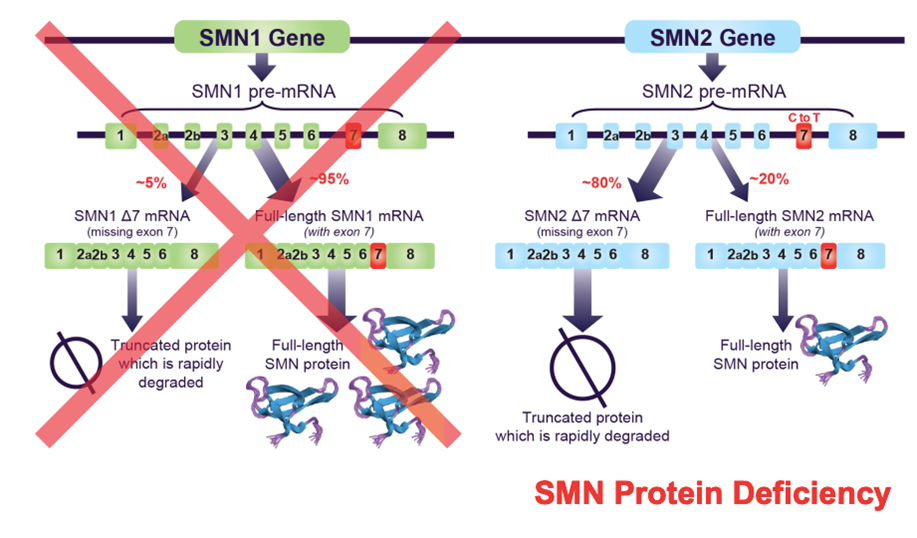Spinal muscular atrophy
Spinal muscular atrophy is caused by a mutation in the SMN1 gene. The body's production of SMN protein decreases, causing the patient's muscles to gradually atrophy. There is another very similar gene in the human body called SMN2, but only 10% of the SMN protein produced by the SMN2 gene has normal function, which is not enough to maintain the body's muscle function. The fewer the copies of SMN2, the more severe the patient's symptoms will be (Figure 1).
(Figure 1)

Common symptoms of SMA include loss of muscle reflexes, tongue twitching, and muscle weakness, while babies with type 1 SMA may have more severe symptoms such as low muscle tone (frog legs when lying down), progressive swallowing and breathing difficulties. When symptoms are severe, the patient may need medical equipment to help alleviate symptoms and maintain life, such as a nasogastric tube, ventilator, etc. (Figure 2).
(Figure 2)

There are currently three types of treatment (see Figure 3). In recent years, gene therapy has become popular. Currently, clinical treatments use adenovirus vectors (AAV9) containing normal SMN1 genes to be introduced into the human body, thereby influencing abnormal cells to express normal SMN1 genes. Currently, Taiwan has health insurance indications (see the Ministry of Health and Welfare's drug benefit regulations for details), and we hope that it will benefit patients with spinal muscular atrophy in the future.
(Figure 3)

(Figure 1)

Common symptoms of SMA include loss of muscle reflexes, tongue twitching, and muscle weakness, while babies with type 1 SMA may have more severe symptoms such as low muscle tone (frog legs when lying down), progressive swallowing and breathing difficulties. When symptoms are severe, the patient may need medical equipment to help alleviate symptoms and maintain life, such as a nasogastric tube, ventilator, etc. (Figure 2).
(Figure 2)

There are currently three types of treatment (see Figure 3). In recent years, gene therapy has become popular. Currently, clinical treatments use adenovirus vectors (AAV9) containing normal SMN1 genes to be introduced into the human body, thereby influencing abnormal cells to express normal SMN1 genes. Currently, Taiwan has health insurance indications (see the Ministry of Health and Welfare's drug benefit regulations for details), and we hope that it will benefit patients with spinal muscular atrophy in the future.
(Figure 3)
